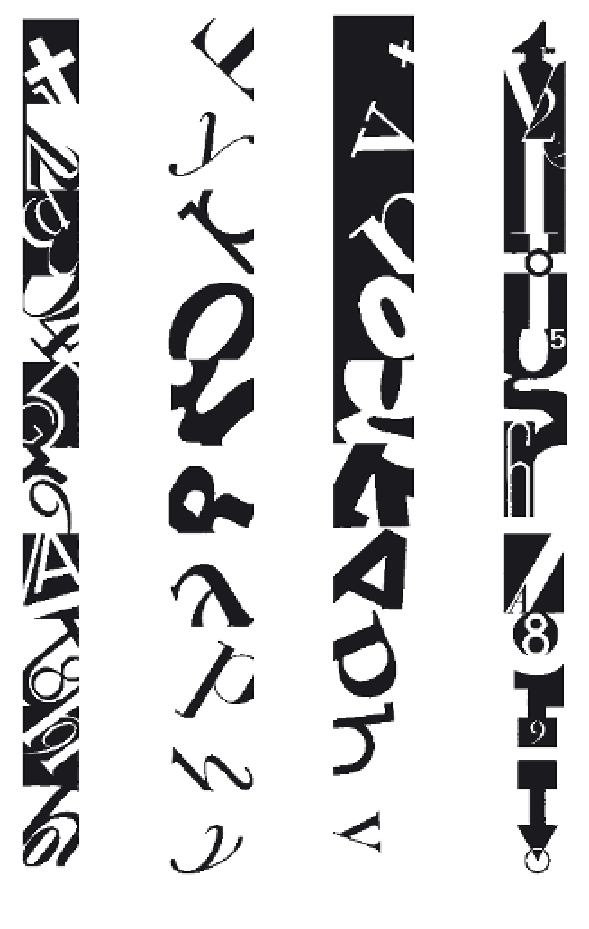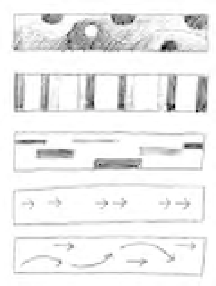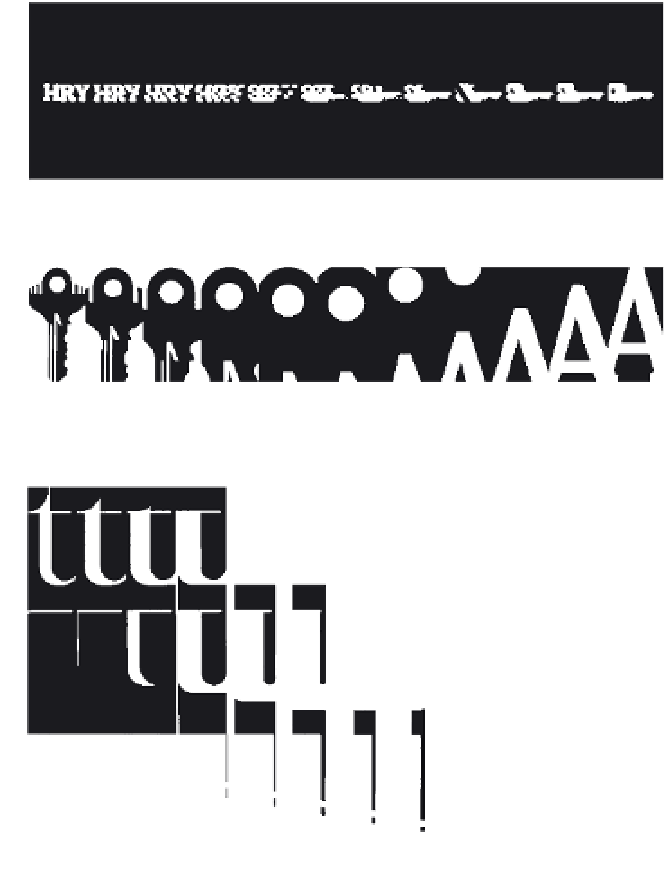Graphics Reference
In-Depth Information
Sequential typographic
forms in space
Typography and image transformations
Akira Ouchi
Gordon Salchow
Virginia Commonwealth University
University of Cincinnati
11-20
By cropping, shifting, rotating, and scaling a large sampling of single
letterforms within square modules, students discover the dynamic
relationships between form and counterform and the resulting effect
upon visual space. Students then proceed with a study of typographic
kinetics by organizing selected modules into a linear sequence of ten
modules (Figs.
11-16 to 11-19
). Similar to musical scores, diagram
sketches enable students to articulate and test sequences with respect
to rhythmic patterns, shape and value transitions, and the flow of
typographic elements (Fig.
11-20
).
A letter has been altered in a series of steps until it is transformed into
a simple object, an abstract shape, or another letterform (Figs.
11-21 to
11-23
). An understanding of typographic sequencing, permutation, and
kinetic properties is developed. Students gain an awareness of form
and counterform relationships, and of the unity that can be created in
complex configurations.
11-21 to 11-23
Designers: University of Cincinnati sophomores
11-16 to 11-20
Designers: Virginia Commonwealth University sophomores
11-21
11-22
11-16
11-17
11-18
11-19
11-23













